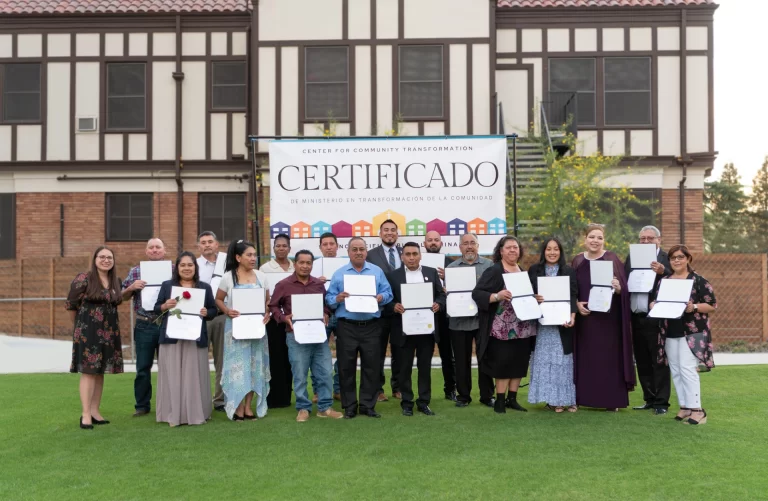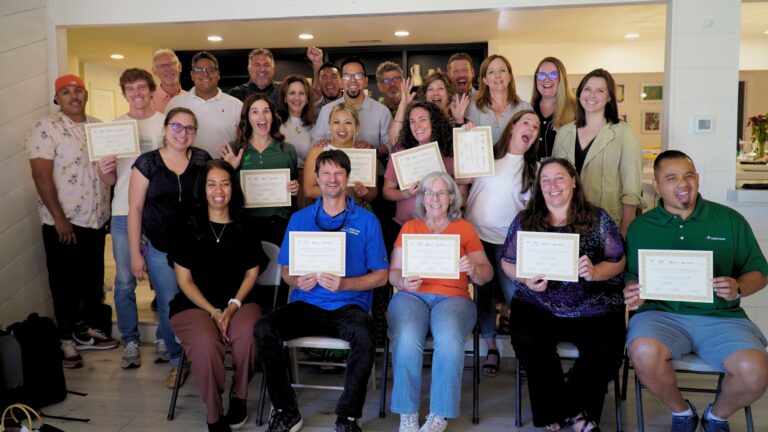The enterprises we awarded in the Spark Tank have in the last 12 months generated $1.2M in revenue and hired 1223 people, many with barriers. This is good news. But it is only the beginning of measuring impact. If Social Enterprises exist to accomplish a particular social good via a non-charity, business approach, how do we gauge the impact they are actually having beyond the financial bottom line?
Generally Social Enterprises fall into one of three types, where the impact is either embedded in the activity of the business, external to activity of the business, or integrated with the activity of the business, according to the Four Lenses Strategic Framework categories. Using these, and adding components of the Neighborhood Industries benchmarking, the CCT has designed questions that get at the metrics necessary for measuring social impact, no matter what the format of the enterprise is. Here are a set of questions we ask of each model:
Measuring Social Impact: Integrated Model1
(1.) If your mission is the employees/workers in your care, consider measuring progress over time in these areas (5 being best):
a. Grooming/Appearance (1-5)
b. Work Quality/Quantity (1-5)
c. Dependability (1-5)
d. Cooperation/Attitude (1-5)
e. Follows Instructions (1-5)
(2.) After working at your enterprise did employees go on to other/better employment?
(3.) Did employees achieve personal milestones that indicate progress or growth, such as clearing warrants, getting their drivers license, regaining custody of children, getting permanent housing, getting banked, repairing their credit, etc. Please list specific examples.
(4.) Do you have other specific examples of progress?
a. for example: stayed in program as result of their employment.
Measuring Social Impact: Embedded Model2
(1.) How many people did you serve, and how did that number compare to last year?
(2.) Did the people you served achieve personal milestones that indicate progress or growth, such as clearing warrants, getting their drivers license, regaining custody of children, getting permanent housing, getting banked, repairing their credit, etc. Please list specific examples.
(3.) What indicators of change do you measure to gauge this impact on their lives? (list the indicators and give examples of change that resulted.)
(4.) What tools have eyou created to measure this impact, (i.e. before/after surveys, entry/exit tests, other)?
Measuring Social Impact: External Mode3
(1.) Were you able to deliver revenue toward the mission? If so, how much more or less than last year?
(2.) What percentage of your profit do you designate to support the external organization and their mission?
(3.) Did the organization you support achieve measurable progress as a result of your support? If so, what did they achieve? How does this influence your decision to support them?
(4.) How is your mission explained to your customers, and what evidence was there that your customers were aware of, understood, or embraced the mission?
(5.) In addition to the above, what other things did you measure, and what outcomes did you see?
Because we ask these questions we are able to gather not only empirical data that helps us understand the scope of impact, but the human story behind the numbers. We learn about:
- the employee who completed her rehab program because of the confidence she gained in the enterprise.
- the employee who went onto start her own business
- the mother who got off public assistance because of the job she got due to her improved job performance in the social enterprise
- the man who avoided re-offending and saved the state hundreds of thousands of dollars in incarceration costs
- the worker who stabilized her economic life so much that she was able to complete her education
(1) Integrated = the product or service and the accomplishment/activity of the mission are integrated. Example: Tree of Life Cafe & Bakery serves great food, and the employees are all people in recovery from addiction or coming out of prison. This typology taken from the Four Lenses Strategic Framework, and the a-e benchmarks taken from Neighborhood Industries.
(2.) Embedded = the specific product or service you deliver and the actual activity you engage in to deliver it are central to the mission of your enterprise. Example: Community Music School creates equity in the arts for under-resourced students giving them access to music education and performance through the delivery of lessons and concerts. This typology taken from the Four Lenses Strategic Framework.
(3.) External Model = the product or service you deliver as well as your daily enterprise activity is not your primary mission. They support the primary mission which is mostly external to your day-to-day operation. Example: Lanna Coffee roasts and sells coffee beans from farmers in Thailand and returns 25% of their profits to those villages so they can build clean water wells. This typology taken from the Four Lenses Strategic Framework.





